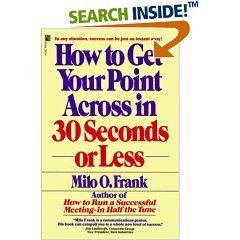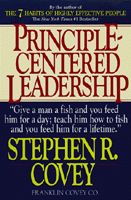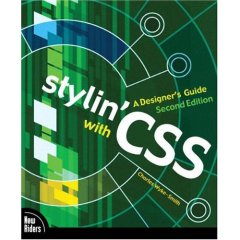How to Get Your Point Across in 30 Seconds or Less, by Milo Frank
Ironically, this book is 128 pages long. While it probably could have been shorter, there are a number of stories and anecdotes that help to illustrate the points Frank is putting forward.
If you have taken any courses, gone to any seminars, or read any books about public speaking there will be parts of this that are not new to you. If you have a broadcasting or journalism background you will likely find nothing new to you. However, if you don’t fall into one of these categories you will find yourself learning the essential parts of any communication and how to effectively hook your audience in order to deliver the rest of your message. The 30 second message isn’t meant to convey all the information at once – only enough to make your audience want more, which you will then happily deliver.
All in all, this book was worth the time it took to read. The concepts within are simple, yet effective. Buy it.



